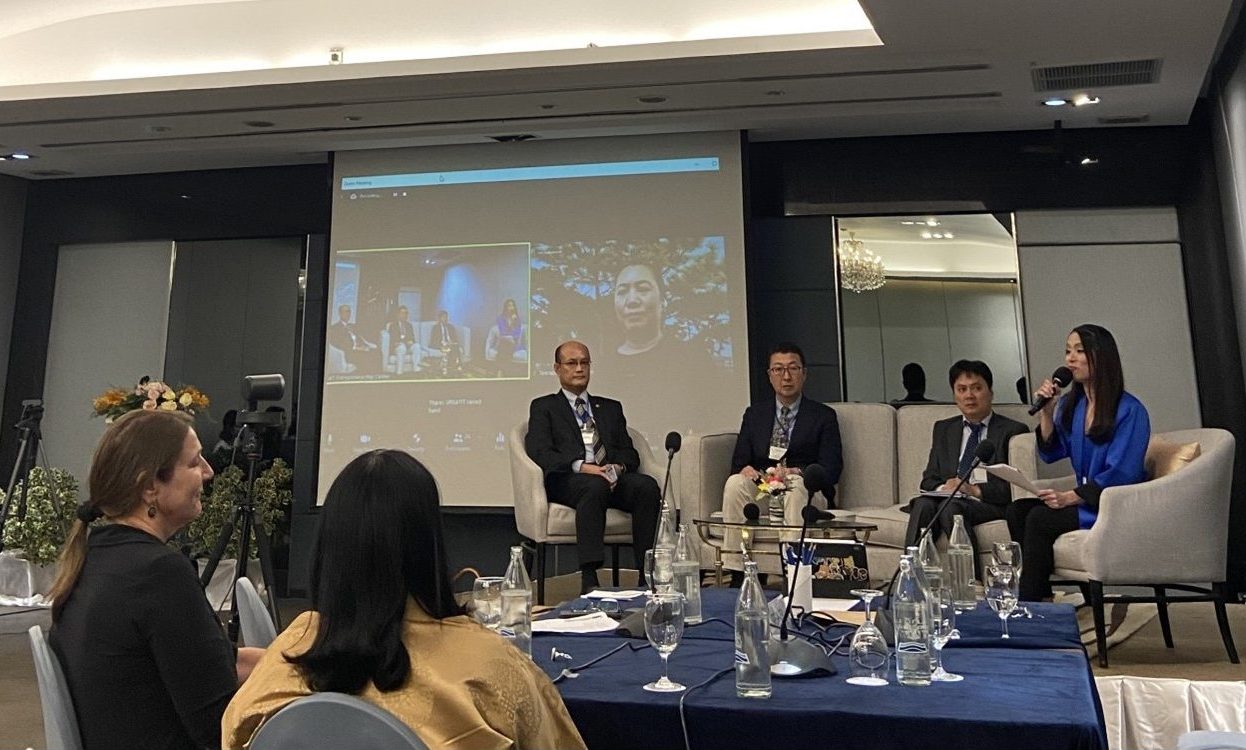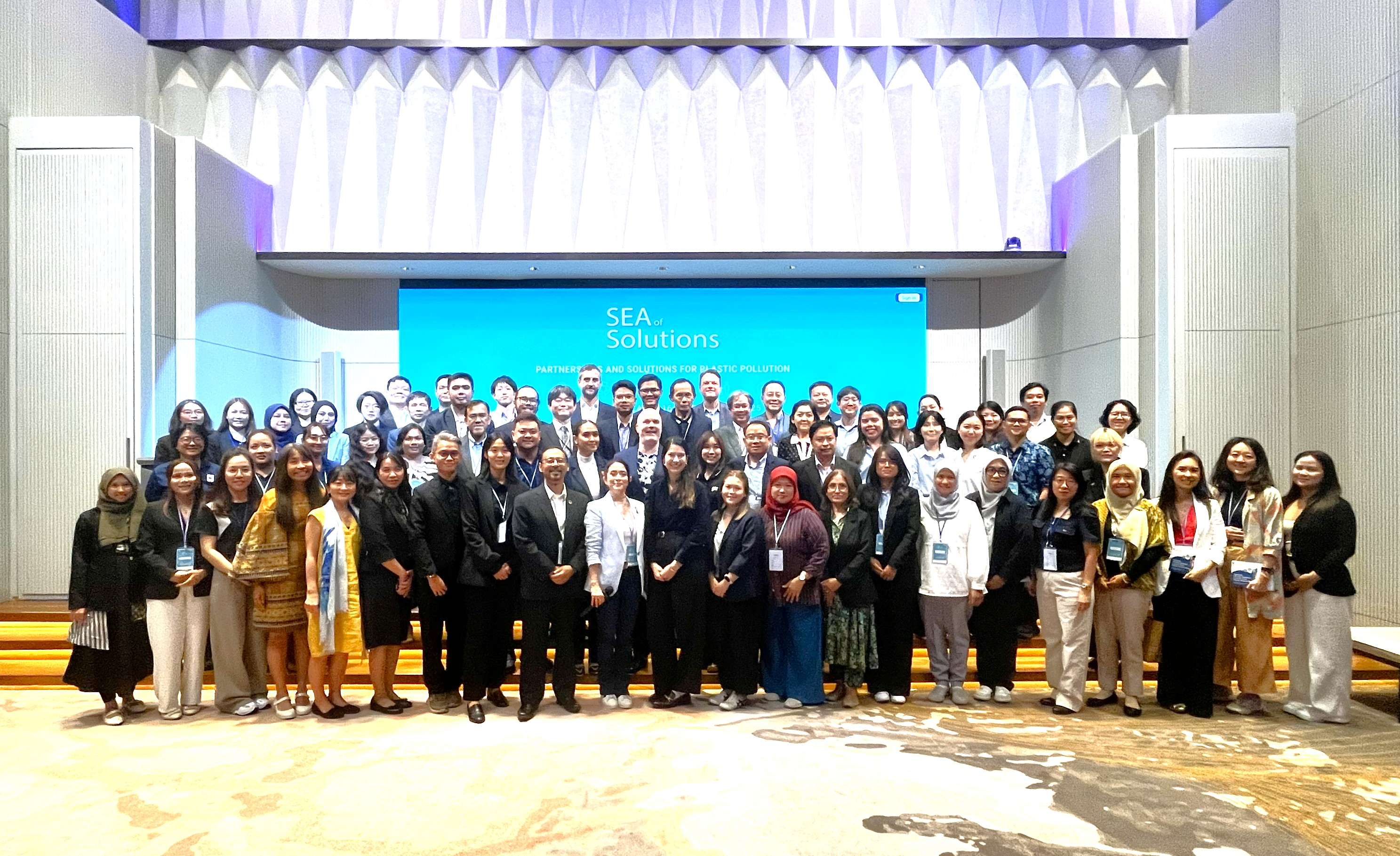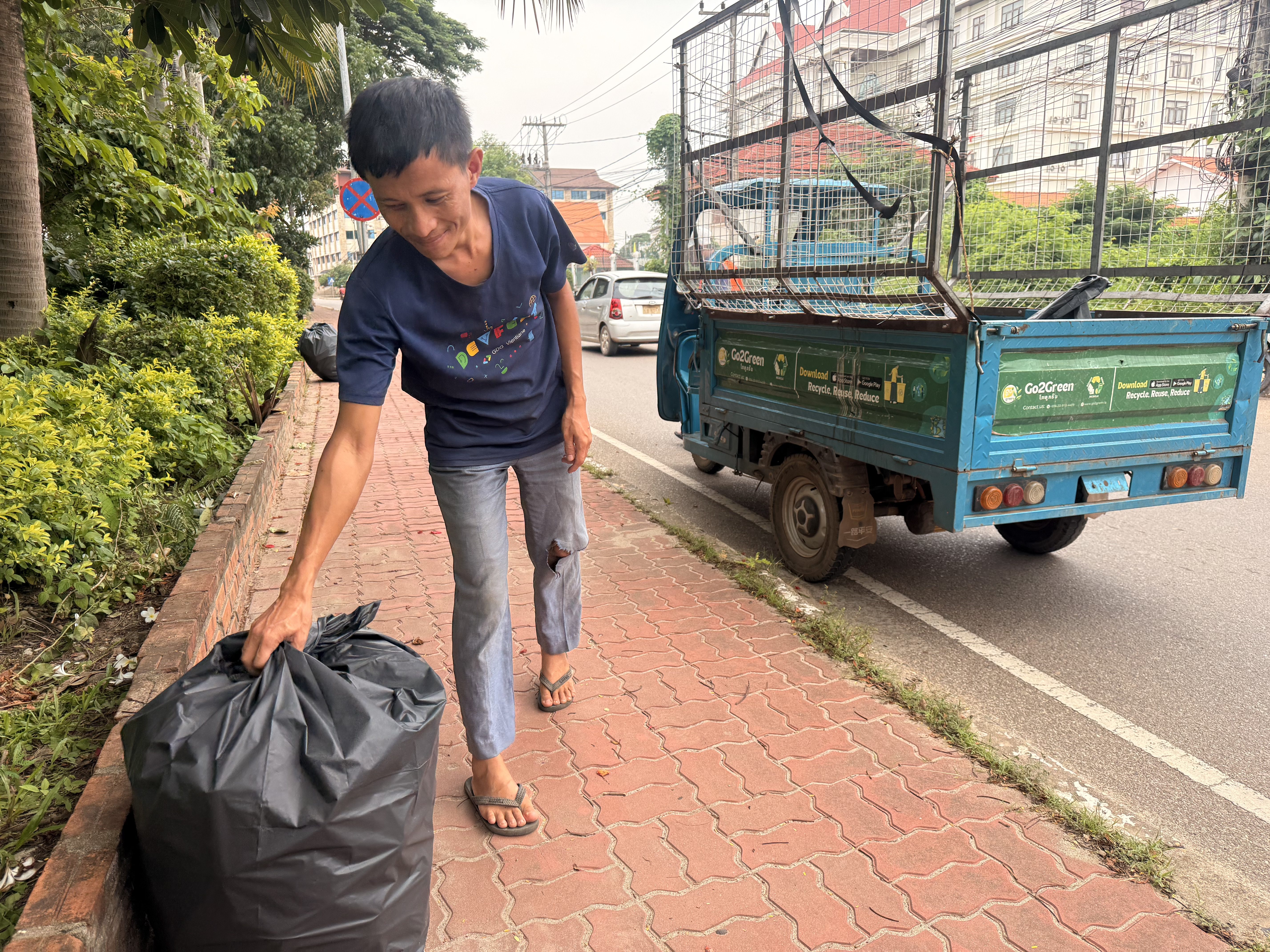

Bangkok, 7-9 March 2023: Building stakeholder partnerships was the central theme of Plastic-Free Rivers: Stakeholders’ Capacity Building to Promote Community Resilience against Plastic Pollution and Climate Change, a three-day workshop organised by the United Nations Environment Programme (UNEP), which gathered experts and stakeholders working in plastic pollution prevention in the Mekong River Basin.
Plastic pollution is a major threat to the Mekong River Basin, which is rich in biodiversity and important to the millions of people depending on it, said Ms Dechen Tsering, UNEP Regional Director and Representative for Asia and the Pacific, in her welcoming remarks.
‘A key aspect of addressing this issue is multi-stakeholder participation, and I encourage everyone to engage, learn, and work together to combat plastic pollution,’ she said.
Effective partnerships between cross-sectoral stakeholders are key for the successful implementation of actions against plastic pollution, not only in the Mekong River Basin, but also throughout the world, said Mr Michikazu Kojima, ERIA Senior Advisor. Integrated partnerships among governments, the private sector, non-profit organisations, academics, and civil society are the key to tackling plastic pollution.
‘This plastic pollution challenge won’t end with a solo effort, but rather requires a multi-stakeholder collaboration,’ he said, adding that marine plastic pollution can only be tackled by an interdisciplinary approach incorporating waste management, material flow analysis, life cycle assessment, and alternative materials for plastics.
For this reason, ERIA's Regional Knowledge Centre for Marine Plastic Debris (the Centre), together with the Institute for Global Environmental Strategies (IGES), and the IGES Centre Collaborating with UNEP on Environmental Technologies (IGES-CCET), established an experts working group bringing together experts and researchers to assist in the creation of baselines and offer a multidisciplinary assessment of marine plastics for the benefit of the ASEAN region.
The panel discussion agreed effective countermeasures for plastic pollution can be fostered through monetary and non-monetary investments from international cooperation. Ensuring both current and future investment is crucial for lasting positive outcomes for river systems, which are major channels of pollution into the ocean.
Dr Llorenç Milà i Canals, UNEP Head of the Secretariat, Life Cycle Initiative, said that between 2021-2040, about US$2.2 trillion of investment should be redirected from new plastic production facilities into other parts of the plastic life cycle.
‘Shifting the linear plastics economy towards the circular one has huge economic benefits. It’s important to understand that if we keep making the problem bigger, without investing in the solution, we’re not going to get out of this plastic pollution problem,’ he said.
Mr Ankit Bhatt, Regional Lead of the Global Green Growth Institute, said this surge of investment in the plastic waste issue should be allocated to key needs such as regulatory frameworks and basic public infrastructure, which would support the transition from the linear plastic economy to the circular economy.
Dr Anjali Acharya, Global Plastics, Pillar Manager at the World Bank, said that for investment it was crucial to emphasise the source-to-sea aspect of plastic pollution.
‘Plastic waste predominantly comes from land and flows through the riverine system into the ocean. So, we need to invest on closing the tap of plastic pollution at the upstream,’ he said.
Science-based Action to Tackle Plastic Waste
Turning off the tap of plastic leakage polluting the environment requires science-based actions, said Dr Chettiyappan Visvanathan, Emeritus Professor at the Asian Institute of Technology (AIT) in Bangkok. There has been an increase in technological innovation for reducing plastic pollution in each stage of the value chain – upstream, midstream, and downstream. These solutions can be categorised based on multiple criteria such as types of plastics (macroplastic, microplastic, both); and point of intervention (land-based, river-based, sea-based).
‘However, although 89% of these solutions are commercially available, not all of them are necessarily viable,' he said.
This means that despite the emergence of science-based solutions, it remains a challenge to tailor specific actions suitable for each country’s political, economic, and social context.
With investment comes a rise in public awareness as actions are implemented, and it is paramount to monitor the amount of plastic waste, both upstream and downstream, to assess the efficacy of measures to reduce plastic pollution. Recent methods and technologies for monitoring plastic pathways were then shared at the workshop.
Dr Noriko Tamiya-Hase, Deputy Director, Office of Policies against Marine Plastics Pollution, Water Environment Division, Japan's Ministry of the Environment (MOEJ), shared how the Japanese government has harmonised domestic monitoring methodologies on plastic litter in rivers, coastal areas, and oceans.
‘Having common methodologies is important for ensuring the comparability and accountability of our actions,' she said.
The government has set different monitoring guidelines for each stage of plastic pollution, and last year the MOEJ developed the Guidelines for River Microplastic Monitoring – available on its website.
Mr Sriram Reddy Mandhati, AIT Senior Research Associate, presented artificial intelligence (AI)-enabled closed-circuit television (CCTV) systems for monitoring floating plastic litter in Thailand and Viet Nam. This technology was developed under the litter initiative of the AIT Geoinformatics Centre (GIC-AIT), which utilises remote sensing and AI to monitor and map plastic leakage.
The panel discussion concluded that rivers are at the heart of the work on plastic pollution. Achieving plastic-free rivers ensures community security and prosperity and the ecosystems that depend on them. Therefore, an integrated and coordinated approach to effectively leverage investments for the development of data, policy, and technology on solutions with stronger multi-stakeholder collaboration at their core, are the key to tackling plastic pollution.
Bangkok, 7-9 March 2023: Building stakeholder partnerships was the central theme of Plastic-Free Rivers: Stakeholders’ Capacity Building to Promote Community Resilience against Plastic Pollution and Climate Change, a three-day workshop organised by the United Nations Environment Programme (UNEP), which gathered experts and stakeholders working in plastic pollution prevention in the Mekong River Basin.
Plastic pollution is a major threat to the Mekong River Basin, which is rich in biodiversity and important to the millions of people depending on it, said Ms Dechen Tsering, UNEP Regional Director and Representative for Asia and the Pacific, in her welcoming remarks.
‘A key aspect of addressing this issue is multi-stakeholder participation, and I encourage everyone to engage, learn, and work together to combat plastic pollution,’ she said.
Effective partnerships between cross-sectoral stakeholders are key for the successful implementation of actions against plastic pollution, not only in the Mekong River Basin, but also throughout the world, said Mr Michikazu Kojima, ERIA Senior Advisor. Integrated partnerships among governments, the private sector, non-profit organisations, academics, and civil society are the key to tackling plastic pollution.
‘This plastic pollution challenge won’t end with a solo effort, but rather requires a multi-stakeholder collaboration,’ he said, adding that marine plastic pollution can only be tackled by an interdisciplinary approach incorporating waste management, material flow analysis, life cycle assessment, and alternative materials for plastics.
For this reason, ERIA's Regional Knowledge Centre for Marine Plastic Debris (the Centre), together with the Institute for Global Environmental Strategies (IGES), and the IGES Centre Collaborating with UNEP on Environmental Technologies (IGES-CCET), established an experts working group bringing together experts and researchers to assist in the creation of baselines and offer a multidisciplinary assessment of marine plastics for the benefit of the ASEAN region.
The panel discussion agreed effective countermeasures for plastic pollution can be fostered through monetary and non-monetary investments from international cooperation. Ensuring both current and future investment is crucial for lasting positive outcomes for river systems, which are major channels of pollution into the ocean.
Dr Llorenç Milà i Canals, UNEP Head of the Secretariat, Life Cycle Initiative, said that between 2021-2040, about US$2.2 trillion of investment should be redirected from new plastic production facilities into other parts of the plastic life cycle.
‘Shifting the linear plastics economy towards the circular one has huge economic benefits. It’s important to understand that if we keep making the problem bigger, without investing in the solution, we’re not going to get out of this plastic pollution problem,’ he said.
Mr Ankit Bhatt, Regional Lead of the Global Green Growth Institute, said this surge of investment in the plastic waste issue should be allocated to key needs such as regulatory frameworks and basic public infrastructure, which would support the transition from the linear plastic economy to the circular economy.
Dr Anjali Acharya, Global Plastics, Pillar Manager at the World Bank, said that for investment it was crucial to emphasise the source-to-sea aspect of plastic pollution.
‘Plastic waste predominantly comes from land and flows through the riverine system into the ocean. So, we need to invest on closing the tap of plastic pollution at the upstream,’ he said.
Science-based Action to Tackle Plastic Waste
Turning off the tap of plastic leakage polluting the environment requires science-based actions, said Dr Chettiyappan Visvanathan, Emeritus Professor at the Asian Institute of Technology (AIT) in Bangkok. There has been an increase in technological innovation for reducing plastic pollution in each stage of the value chain – upstream, midstream, and downstream. These solutions can be categorised based on multiple criteria such as types of plastics (macroplastic, microplastic, both); and point of intervention (land-based, river-based, sea-based).
‘However, although 89% of these solutions are commercially available, not all of them are necessarily viable,' he said.
This means that despite the emergence of science-based solutions, it remains a challenge to tailor specific actions suitable for each country’s political, economic, and social context.
With investment comes a rise in public awareness as actions are implemented, and it is paramount to monitor the amount of plastic waste, both upstream and downstream, to assess the efficacy of measures to reduce plastic pollution. Recent methods and technologies for monitoring plastic pathways were then shared at the workshop.
Dr Noriko Tamiya-Hase, Deputy Director, Office of Policies against Marine Plastics Pollution, Water Environment Division, Japan's Ministry of the Environment (MOEJ), shared how the Japanese government has harmonised domestic monitoring methodologies on plastic litter in rivers, coastal areas, and oceans.
‘Having common methodologies is important for ensuring the comparability and accountability of our actions,' she said.
The government has set different monitoring guidelines for each stage of plastic pollution, and last year the MOEJ developed the Guidelines for River Microplastic Monitoring – available on its website.
Mr Sriram Reddy Mandhati, AIT Senior Research Associate, presented artificial intelligence (AI)-enabled closed-circuit television (CCTV) systems for monitoring floating plastic litter in Thailand and Viet Nam. This technology was developed under the litter initiative of the AIT Geoinformatics Centre (GIC-AIT), which utilises remote sensing and AI to monitor and map plastic leakage.
The panel discussion concluded that rivers are at the heart of the work on plastic pollution. Achieving plastic-free rivers ensures community security and prosperity and the ecosystems that depend on them. Therefore, an integrated and coordinated approach to effectively leverage investments for the development of data, policy, and technology on solutions with stronger multi-stakeholder collaboration at their core, are the key to tackling plastic pollution.

Research Associate



